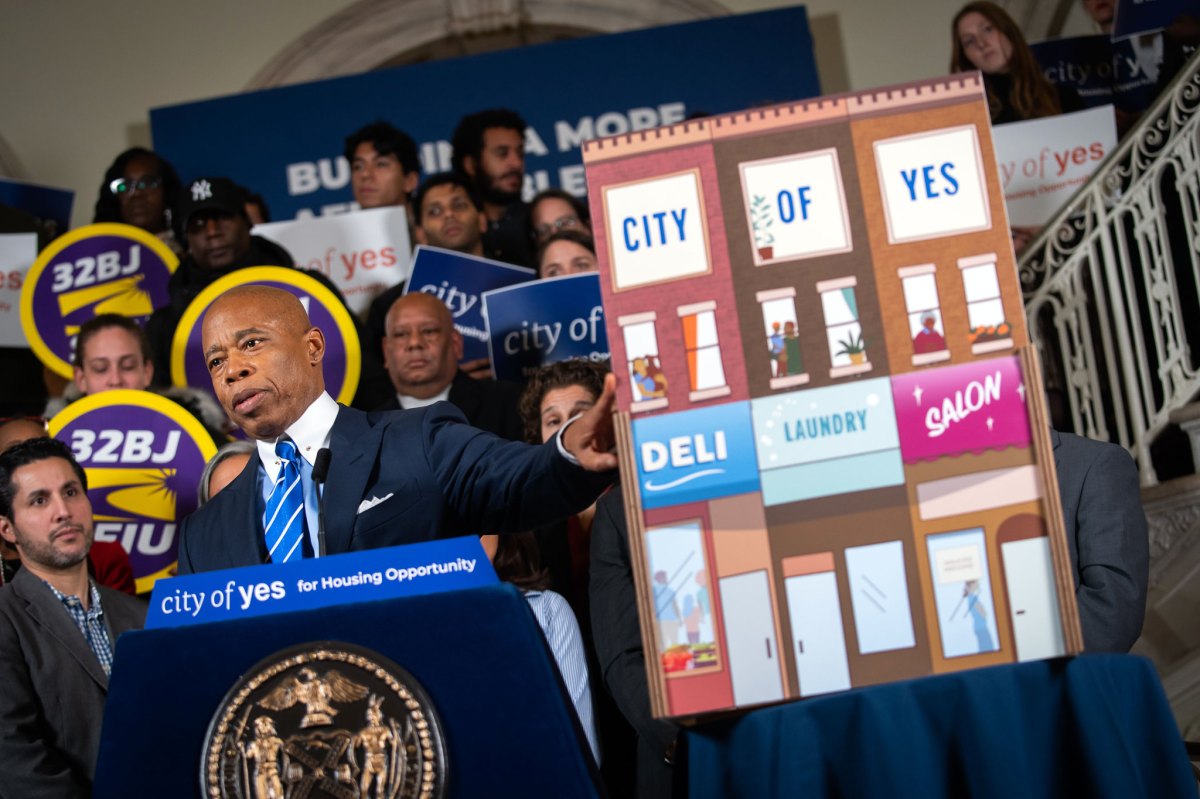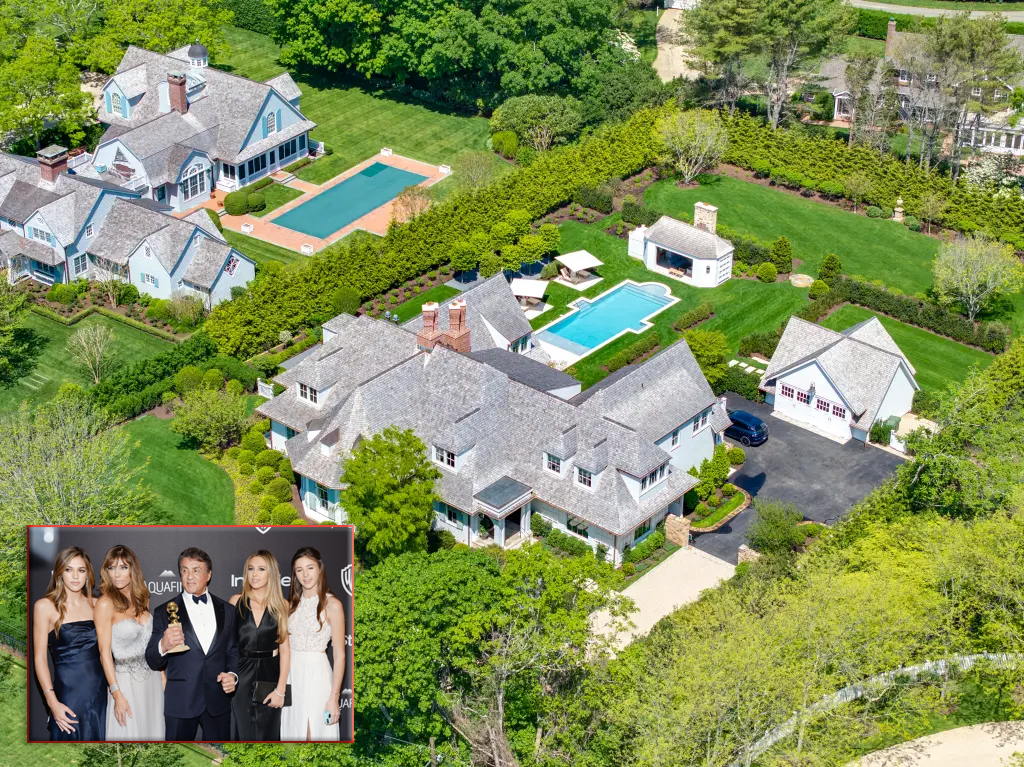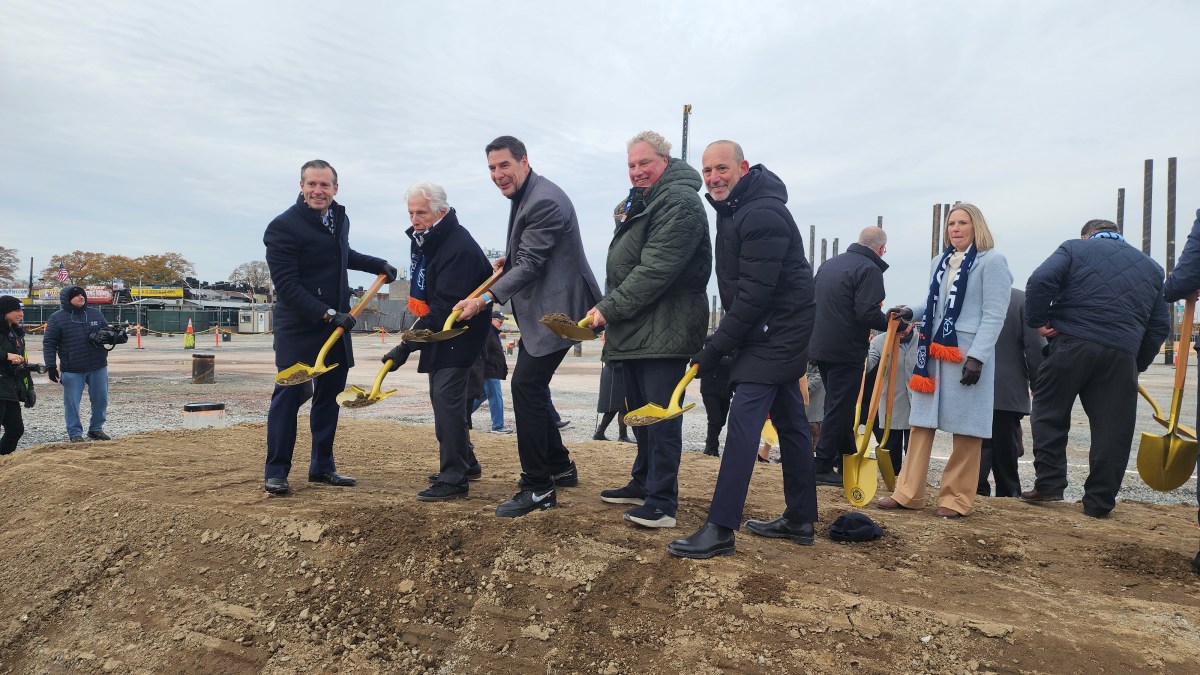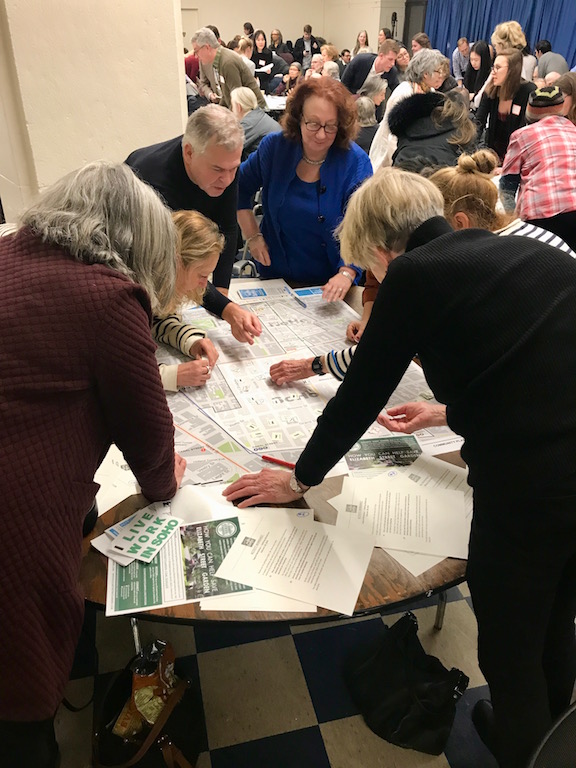
BY GABE HERMAN | The second meeting in the ongoing Soho/Noho rezoning process was more organized than the first, but still featured fearful community members concerned that their voices would be heard.
Billed as a public-engagement workshop, the Feb. 28 event was titled “Defining Mixed-Use.” It opened with Manhattan Borough President Gale Brewer sounding a conciliatory note after the earlier chaotic open house last month.
“I do think the first public even sucked, and we learned many lessons,” Brewer said. The borough president is an initiator of the process, along with the Department of City Planning and Councilmember Margaret Chin.
“There are no preconceived ideas,” Brewer stressed, adding the process was about public participation, which Chin reiterated in her remarks.
Jonathan Martin, of BFJ Planning, who will produce a report of recommendations at the end of the six-month process, said the area’s zoning is outdated because it is no longer primarily a manufacturing neighborhood.
“There’s a lot of retail and other uses going on,” Martin said. “Some of the issues with zoning include that it does not reflect what we see on the ground.”
Sylvia Li, a City Planning staff member, then gave a slideshow presentation on economic data about the neighborhood. But about 12 minutes in, the crowd of about 200 grew restless, especially when data was presented about which job sectors are represented in the neighborhood. Li acknowledged that the data, from the state Department of Labor, did not include independent artists and freelancers.
This drew groans and interruptions from the room.
“We’re not up there,” a man said of the presenters.
“There’s no residential artist representation,” a woman protested.
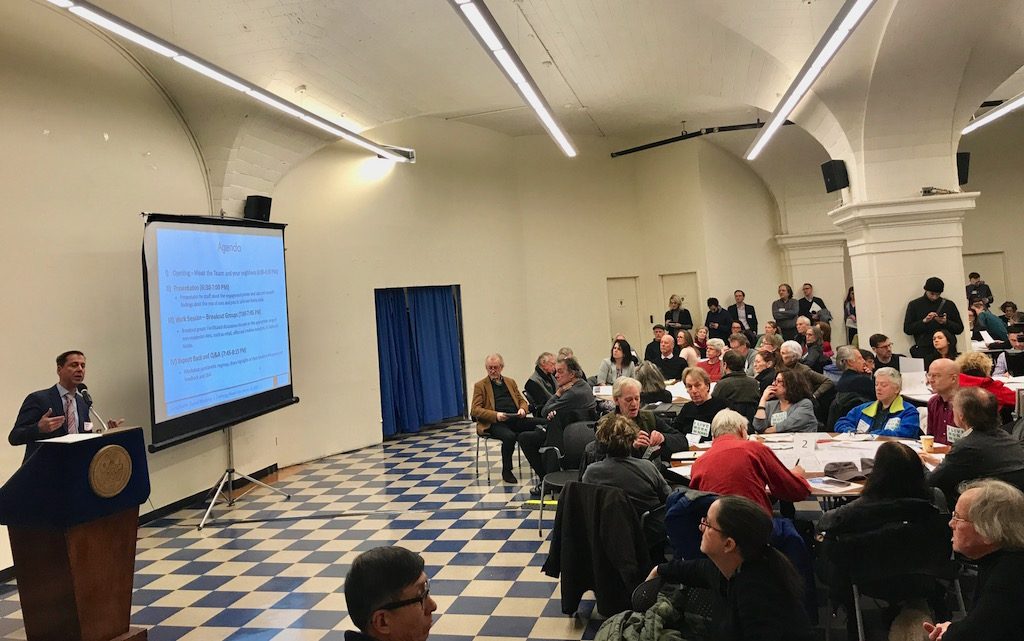
When a quick survey of the room was taken asking how many were artists, about 90 percent of the people raised their hands.
Li assured more data about artists would be brought to future meetings — but the crowd interruptions continued.
“Artists are the essence and the reason this neighborhood exists,” a woman stressed. “Without the artists, Soho would be a crosstown expressway.”
She was referring to the aborted plan by Robert Moses to build a Cross Manhattan Expressway across Broome St., linking the East River bridges and the Holland Tunnel. As manufacturers vacated their buildings in anticipation of the project, artists moved in and founded the world-famous residential enclave.
“The fear we have,” another woman added from the audience, “is we are being co-opted by an already-made decision.”
In short, many residents fear that, despite the rudimentary trappings of an open process, “the fix is in.”
Martin stepped back in to concede faults in the data, and to say that, with the crowd’s permission, they would move on to the next part of the meeting. Each group’s table in the room was asked to map how they see the neighborhood being used now, and what they want for its future, in terms of types of uses.
Each table then reported back to the room. Longtime Soho resident Pete Davies, speaking for his table, said their chief problems were traffic and there being too much destination retail, rather than local businesses. His group’s wants included tax breaks for artists and quieter streets at night.
The need for more local retail shops was a common issue raised at many tables, along with the need for more green space and protecting artists’ historic presence in the neighborhood.
Speaking the day after the meeting, Councilmember Chin told this paper, “Yesterday’s session was the beginning of something extraordinary, true participatory planning. Long-term residents of Soho and Noho helped us define what mixed-use will mean for these two unique neighborhoods. This style of community-based planning, common elsewhere in the country, is proactive rather than reactive.”
Days after the meeting, on March 4, the formation of a new ad hoc group, the Save Soho-Noho Coalition, was announced. It will include several community groups, among them the Bowery Alliance of Neighbors, the Broadway Residents Coalition, the Greenwich Village Society for Historic Preservation, Lower Manhattan Loft Tenants, the Noho Neighborhood Association, and the Soho Alliance.
The member groups said Save Soho-Noho Coalition would push for residents’ interests in the rezoning process. They added that the coalition’s formation was also a reaction to New York University’s expansion proposals and another new group, the Fix Soho Noho Coalition, being formed by developers and real estate companies.
Members said the new coalition’s aims include wanting to protect Soho and Noho’s unique Joint Living-Work Quarters for Artists zoning; keeping current limits on retail sizes allowed in the area; maintaining current density regulations as they relate to floor-area ratio (F.A.R.); and maintaing the creative character of Soho and Noho.
“It’s clear that big real estate and big institutions have an agenda to reshape Soho and Noho in their image,” said Andrew Berman, executive director of G.V.S.H.P., as part of the coalition’s initial statement. “Time and again, we have seen the city listen to these interests rather than longtime residents and small businesses when considering neighborhood rezonings, and we don’t intend to let that happen here.”




